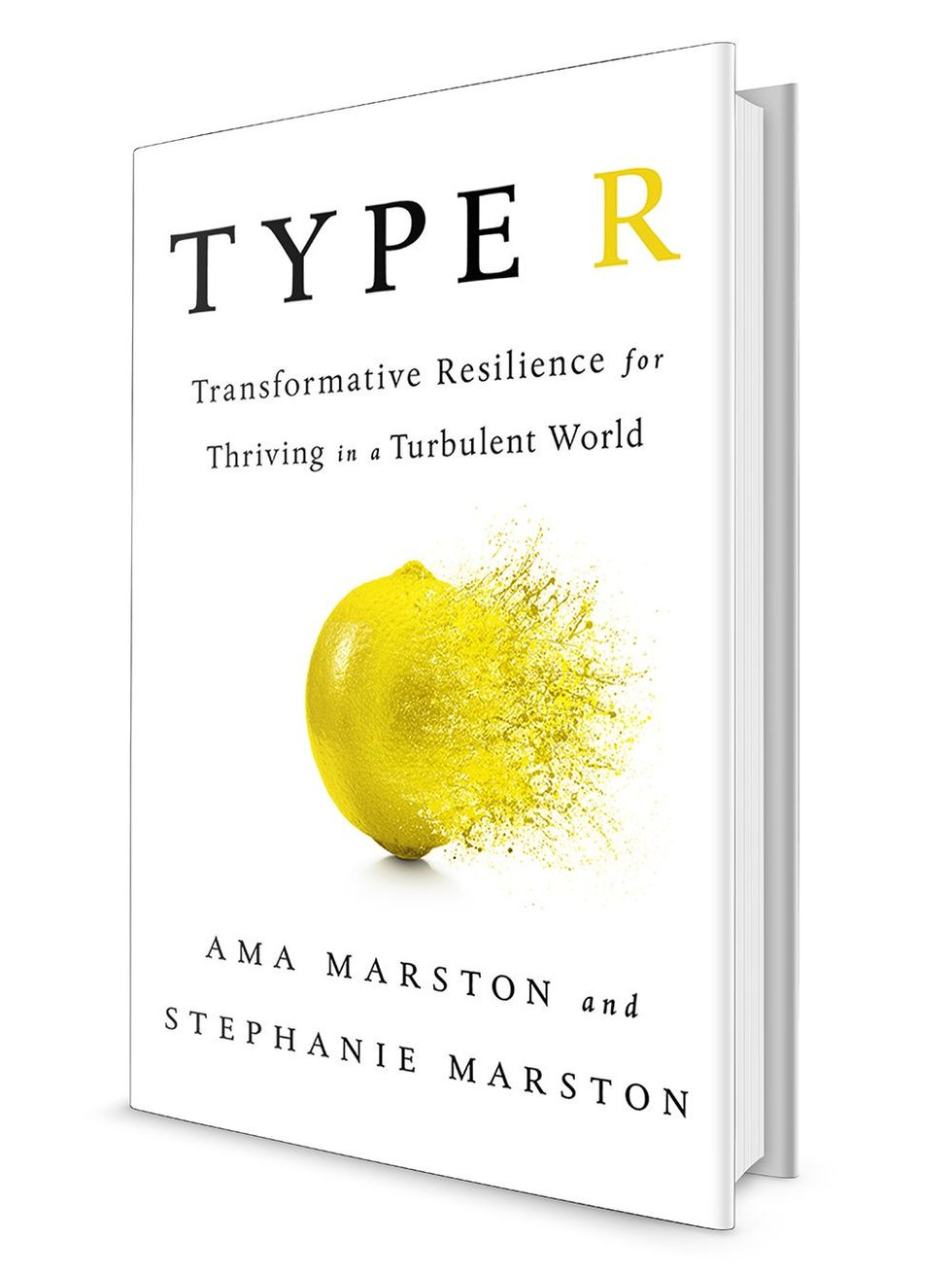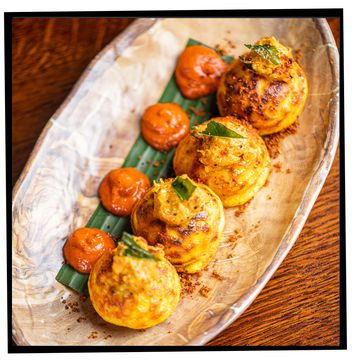Picture a storm, with tornado-force winds. Now imagine you're a tree (bear with me).What kind of tree would you want to be? A solid oak whose roots have grown for hundreds of years underground, or a palm with a trunk that bends in the wind? If you chose to be a seemingly invincible oak, your trunk would have snapped in half, uprooting you. If you opted for the palm, with its flexible trunk, you survived. Well done!
The storm-tree analogy has long been part of psychology speak, but its implications are more relevant than ever. After a turbulent 2017 and an uncertain start to 2018, resilience is emerging as a self-help buzzword; it's something we'll need to weather the social and political storms ahead. And you might not be surprised to hear that, as with Danish hygge (making life cosy) and Swedish lagom (meaning 'in moderation'), the hype around resilience is aligned with another Nordic import: sisu.
And yes, it's a Nordic word you can actually pronounce: 'sis' with an 'uh' sound at the end. It also has far more meanings than its hygge predecessor. According to Helsinki-based journalist Joanna Nylund, whose book Sisu: The Finnish Art Of Courage (Gaia) is out now, sisu is difficult to translate. In her book, she uses several different words to describe it, including resilience, will power, toughness, tenacity and strength. If you were to think of the British equivalent, Joanna says, it would be akin to having 'fire in your belly': 'For me, sisu is a visceral force, and usually we point to our stomachs when we talk about it: the term actually comes from the Finnish word for guts.'
According to Joanna, sisu can be applied to several areas of life, from wellbeing (there's a chapter about reconnecting with nature, which also gives foraging tips – nettle soup anyone?) to how to talk using sisu. And just as hygge went on to influence everything from home interiors (just light one more candle) to our wardrobes (chunky knitwear), sisu looks set to shape both our lifestyle and our outlook on life. In Finland, telling someone they have sisu is one of the biggest compliments you can give. 'It's a wonderful thing for someone to say, "Oh, you have so much sisu." It's like saying you have strength of character and strength of personality in one go,' says Joanna. But it's not something Finns brag about: 'It runs underneath everything we say and do. It's always there, almost omnipresent.'
So how can we achieve it, and who is a good example of someone who displays sisu? For her book, Joanna interviewed expert Emilia Lahti, who has researched sisu as a psychological construct. When I ring Emilia, who is blonde, beautiful and typically Finnish-looking, she demonstrates sisu as soon as she picks up the phone. She's just come in from a two-and-a-half-hour run in the snow as part of her training for 50 ultra-marathons in 50 days across New Zealand; this is in aid of 'Sisu Not Silence', her personal campaign against domestic violence. But, Emilia says, 'Sisu isn't something we do all the time; it's a place we visit in those moments that are so tiring we feel we've consumed all our energy.' I ask why it feels so relevant now. 'If you look at the global situation, there's a lot of restlessness; people are looking for answers,' she says. 'We're seeing the ugly side of the systems around us.'
It's not just the Finns acknowledging that now, more than ever, we need to display strength and courage in the face of adversity. Psychologist Sam Owen's recent book Resilient Me, How to Worry Less and Achieve More (Orion Spring) is a practical guide that aims to help readers achieve inner strength in four weeks. She chose to focus on resilience because, she says, 'It's a core element of what determines people's progress and how easily you bend with all that life throws at you.' There's that palm tree flexing in the storm again.
In her book, Sam identifies three pillars of resilience: positive outlook, driving motivation and a problem-solving approach. Without one of those pillars, it's impossible to build your inner strength. She also offers eight resilience-boosting habits, which include closing unpleasant chapters and setting achievable 'true goals'. These, she says, will help train the brain to fall into a healthier pattern. So even if you're not sure how tough you actually are, it's something that can be learnt. 'Resilient people have a positive outlook from the outset,' says Sam. 'Even if it's a horrible, scary, gut-wrenching situation, they'll still keep a positive mindset about it, and will take proactive steps to try to resolve it.'
While Sam's is more of a traditional self-help book, Ama Marston, a leadership expert, has collaborated with her psychotherapist mother Stephanie Marston to write 'a big think piece' that aims to change the conversation around resilience. The book – Type R: Transformative Resilience for Thriving in a Turbulent World – is, says Ama, 'not focused on the traditional approach to bouncing back, but transformative resilience – the idea of building on challenges and using them to your advantage by learning, instead of feeling that it's a waste that you've gone through difficult times.'
If this all sounds like hard work, the good news is that, as a woman, Ama says, you're more equipped to initiate transformative resilience: 'Women tend to be raised as communicators and encouraged to be self reflective, so they have a skill set that lends itself to being more "Type R" – people, leaders, business owners who turn challenges into opportunities for innovation.' Although it's obviously not entirely unique to women, Ama acknowledges that 'we face a number of unique stresses and pressures – such a slower pay, which affects our finances andour mental health, plus having to juggle work and personal lives. We often have to learn how to work around those things and adapt, while also speaking up for what we believe is right.' Which seems more relevant than ever in a post-Weinstein, #TimesUp age.
Resilience is an important topic, not just a Nordic import encouraging us to light more candles. From the Finnish art of courage to transformative resilience, it has many angles and perspectives. But it seems only fair to give Emilia the last word: 'Sisu is a four-letter word that's so tiny, yet so powerful,' she says. 'And it means a different thing for each person.' So, the next time you're facing a storm, why not channel sisu and be the palm tree?
HOW TO BE MORE SISU
Sisu may be a Finnish word, but it's a universal trait, says Joanna Nylund, author of Sisu: The Finnish Art Of Courage. Here are her tips:-
Prepare Yourself
If you have to do something that makes you nervous, prepare as much as you can. If your nerves start to fray, at least you won't worry about not knowing your stuff.
Care for Yourself
When the going gets tough, we often neglect ourselves. Get plenty of sleep, fresh air and good nutrition, and you'll feel the effects.
Centre Yourself
An essential part of being able to tap into your sisu is silencing noise. Declutter your mind through meditation and deep breathing, or by simply spending time in nature.
This article originally appeared in the March 2018 issue of ELLE UK















